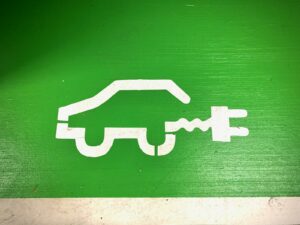Can the most abundant element in the universe be used as a propellant for heavy vehicles and off-grid gas replacement? Martin Guttridge-Hewitt explores the emerging hydrogen market to better understand costs, emissions, and access.
Professor Nigel Brandon (left) is more than qualified to talk about the UK’s future energy mix. Dean of the Faculty of Engineering at Imperial College, London, where he holds a chair in Sustainable Development in Energy, until late-2022 he was director of the UK Hydrogen and Fuel Cells SUPERGEN Hub.
He’s also co-founder of The First Element, a group of technology, science and engineering experts exploring commercial, industrial, and consumer use cases for hydrogen and green hydrogen, and identifying potential routes to market. A clear advocate of this fuel type, nevertheless he’s quick to point out that environmental cure-alls do not exist.
‘Green hydrogen is made through electrolysis, [renewable] electricity is our input, and there will always be a penalty for that, an efficiency loss in conversion. Therefore, there will also be a cost associated with the process. So, the first thing to say is if you can use green electricity to power something directly you should do that. A more electric future is the direction of travel,’ says Brandon. ‘But if we’re taking a picture across the whole UK economy, there are a lot of industrial processes which are hard to decarbonise electrically.
‘The First Element is also very concerned with making hydrogen more accessible at a consumer level. So, could homeowners and other building operators produce hydrogen locally from a renewable source, most likely a photovoltaic panel, but for larger applications it could be a wind turbine, and store that locally? Then, can it be used locally to decarbonise energy consumption?’, he continues.
Several markets are being considered, many of which are off-grid and currently reliant on bottled gas. For example, cooking on a stove without a piped connection, or firing up your barbecue. Others, such as chemical production and steelmaking, are too power-intensive to consider electricity alone.
‘It’s not as clear as just saying ‘it’ll all be electricity’ or ‘it’ll all be hydrogen’. It will end up a mix, with more electricity than today and hydrogen … but it depends on where you are and what you need,’ says Brandon. ‘Electricity is going to be the cheapest per unit energy, then hydrogen, then synthetic fuels made from hydrogen.’
Crunching the numbers casts this point in sharp relief. From an efficiency point of view, it makes most sense to run an electric heat pump to warm a house. As Brandon tells us, this offers around 3.5 units of heat per unit of power. However, installing the system is hugely disruptive and incredibly expensive. By comparison, switching from natural gas to hydrogen requires fewer and simpler upgrades, making it significantly cheaper, but as a result efficiency suffers.
‘There are also going to be sectors of the transport industry which are very hard to electrify with batteries. Aeroplanes are a classic. You’re never going to fly across the Atlantic in a battery electric plane,’ he continues, before adding maritime and shipping to a list of sectors that need too much power for direct electrification. ‘Buses and trucks come next. It might be possible with battery electric, but you might also need a fuel.
‘That may come directly as hydrogen, or a synthetic fuel made from hydrogen, which involves mixing biogenic CO2 with hydrogen. This gives us a drop—in fuel, which can be used in a standard combustion engine,’ he continues, adding that fuels produced from hydrogen and green hydrogen have their own Achilles heel – price. ‘I often say to folk that synthetic fuels are going to be used for two reasons, one is flying you to New York, and the other is to drive your classic Aston Martin. Beyond, they’re not going to have much use because of the cost.’
When it comes to the future of transport, and in particular the role green hydrogen plays in this, Juergen Guldner (left) has plenty to share. As Manager of Hydrogen Technology at BMW, his team plays a central role in investigating how the automobile giant’s production line can decarbonise over the coming decades by incorporating green hydrogen.
The firm currently has a pilot fleet to showcase what can be achieved with the technology, and some vehicles could be available to buy later this decade. While proud the company now offers a battery electric option for every internal combustion model it makes, Guldner is also clear that a single fossil fuel alternative will not suffice.
‘We’re thinking long-term the world needs a second zero emission technology. There are some use cases where battery electric will have limitations. In the transport sector it’s a complex picture, but the general gist is the heavier the vehicle the more hydrogen makes sense,’ says Guldner, explaining BMW has been researching the gas for 40 years. ‘But we also see potential on the passenger side of things, with vans and light duty vehicles… we get feedback from a certain set of customers that battery electric won’t fulfil their mobility needs, and they want zero emission.
‘Hydrogen vehicles can offer good value propositions… they have great acceleration, a silent ride, are emission-free – providing it’s green hydrogen – and refuelling is fast, like a combustion engine,’ he continues. ‘Many people don’t want to plan their lives around electric charging, and 20 or 30 minutes to recharge is a hassle. So, for hydrogen we’re talking people who don’t have home charging and rely on public infrastructure. This will always be a problem in big cities. At BMW we think worldwide, and a lot of metropolitan areas will find it difficult to have electric charging everywhere.’
The UK is not immune to this. An October 2022 investigation by Air Quality News revealed that of the 300,000 charge points Downing Street wants to install by 2030, just 30,000 are in place so far and the national roll-out shows no signs of speeding up. There are several reasons behind this, including the expense of installing completely new infrastructure. By comparison, hydrogen and green hydrogen can use existing equipment.
‘Electric charging infrastructure has its limitations once you consider the end game – getting 100% of vehicles done. This is where hydrogen really comes into its own because it can use existing gas stations, we just need to retrofit them. The cost is pretty much the same for each unit, it might actually go down once more people are building the compressors, pumps and so on at stations,’ says Guldner. ‘The interesting bit is studies from Germany and the EU Commission have shown dual infrastructure – hydrogen and electric charging – is the cheaper option if you want to reach all vehicles.
‘Electric charging infrastructure has an increasing cost curve because it involves upgrades to the grid, transformer stations, and so on, to get all the electricity needed to feed charge points. When we think about the kind of big parking garages we have in cities, if you want most parking spaces to be electric it becomes really expensive. We even have to dig up roads to put bigger cables down,’ he continues. ‘The general theme and thinking is now that two infrastructures are better than one, especially as we have to build for peak. If we want to avoid chaos on holiday weekends and so on, when everyone is on the road, hydrogen could be a big relief to the pressure on infrastructure.’
Signs of this approach are becoming apparent, especially on the continent. EU member states have already agreed to build hydrogen fueling stations in all major ‘urban nodes’. This term refers to 424 cities across the region with more than 100,000 inhabitants, where ports, airports and rail terminals are found. Stations will also be placed every 200KM along the Trans-European Transport Network (TEN-T) of nine core travel corridors that cross-cross the bloc. Meanwhile, in the UK, the first purpose-built hydrogen stations will open in 2024 thanks to British start-up Element 2 and an £8million government investment.
‘A lot of the components [in hydrogen vehicle], I’m tempted to call them ‘standard’, because the automotive industry has been making them for more than 100 years. Sensors, valves, pipes, the air system, compressors, all these are industrial components and suppliers today are very interested in this [hydrogen] technology because for them it’s a continuation of their business,’ says Guldner, explaining the favourable price of infrastructure compared with battery electric vehicles continues through to the parts found in hydrogen engines. ‘So, there are a lot of factors that suggest costs overall will come down, too.
‘Obviously it’s not there yet, and all this will take some time to develop, but for us it’s not about reaching that first X per cent of people who want to drive zero emission. They will go for the great battery electric cars that BMW and others have on the market. This is really about the last of the 100%, and we really don’t know how many people will be left over,’ he continues. ‘We’ve been touring the world with our prototype models and in every country the feedback is positive. If you want to change behaviour, offer choice. And that is exactly what we’re doing.’
This article first appeared in issue 22 of Air Quality News
















Leave a Reply